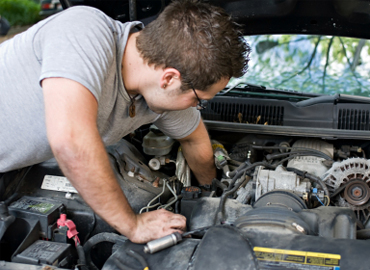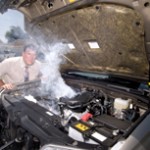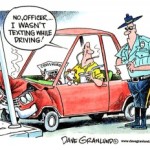Preventative care can be applied to both your car and your basic driving habits. Knowing what to look for before and after getting in the driver’s seat can help save you both stress and money in the long run.
Checking Tires
Make sure your car is road-ready before starting the ignition. Keep a tire gauge handy and routinely check to make sure your tires have enough air pressure. This is important because tire-pressure levels can change without a leak or a puncture. Did you know tire pressure changes along with the temperature? As temperatures drop, so can the amount of air in your tires. Over time, that can reduce your gas mileage and your tires’ life span.
Checking Oil and Fluids
Occasionally open the hood to make sure the oil level isn’t low. Your car’s engine has a complex set of pistons and other moving parts that require oil to keep friction from burning them up. When you look under the hood, find the dipstick marked with an oilcan icon or the word “oil”; pull out the dipstick, wipe it off, then put it back in. When you pull it out again, look at the dipstick to see where the oil line falls in relation to the high and low marks. This is how you read the car’s oil level. If you’re a quart low, don’t panic — your car won’t break down — but you shouldn’t delay in adding a quart or getting your car to the garage. Oil levels can get low for a variety of reasons, including regular use over time, so it’s a good idea to check the levels occasionally between oil changes.
Under the hood, you can also check the levels for your engine’s coolant, brake fluid and even your windshield-wiper fluid. In most cases, you can fill them yourself if they’re low, but it’s critical to fill all tanks only to the line that says “full.” Never overfill anything — especially the oil. Your car has a system of seals that can be compromised if you fill above the line.
Once Behind the Wheel
Once you take the wheel of a car that’s been properly maintained, there are some important everyday safety measures you can take. For starters, it’s a good idea to put your cell phone someplace where you won’t be tempted to use it except in the case of an emergency. Texting while driving, in particular, is among the leading driver distractions. Safe driving calls for two hands on the wheel.
Eating, writing and fiddling with a vehicle’s gadgets — particularly the audio system — while driving have also been listed among the more dangerous driver distractions by the Insurance Institute for Highway Safety. Avoid these distractions every time you drive to help keep yourself and your passengers safe.
Article source: http://instoresnow.walmart.com/article.aspx?center=AutoCenter&top=89967&id=86273










